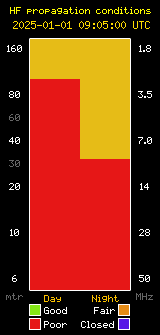Technical Mentoring and Elmering Net – Thursday April 21, 2016
The audio archive can best followed by downloading the .mp3 file for the appropriate date here and listening with the media player of your choice. You can move the progress slider forward or backward to the subject of interest to you. Tonight’s net had 7 check-ins and some chat room visitors, Levi (K6LCM) was net control. Topics discussed were: Repeater courtesy tone, what is it and how is it used? (Current stand in K6TZ repeater doesn’t have one). What are the extra characters being transmitted in the repeater CW ID? Continental Bio-Fuel airplane trip from Rhode Island to Santa Monica. Tune in to the SBARC TM&E Net next Thursday at 8:00 PM (2000 Hrs) and see what interesting questions will arise or ask some of your own! All club members and visitors are encouraged to check in to the TM&E net each week and join in with questions and /or answers to and contribute the knowledge of new and seasoned amateur radio operators alike.









